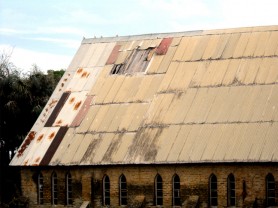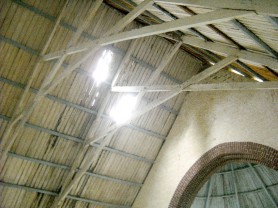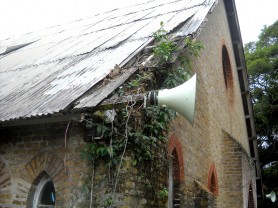The church building was originally constructed on 9 December 1827 but was replaced by the present structure on 29 June 1855. The church is noted for its tiled sanctuary, massive brickwork, asphalted floor, architectural rafters and windows portraying events in the life of the patron saint. At present, the roof of the building has sizeable holes while the walls are cracking; some of the windows have fallen out.

At Tuesday’s funeral service for former deputy prime minister Winston Murray, the church’s priest Father Albert James lamented over the state of the building and said he had sought assistance from the National Trust, to no avail. James said he nevertheless remained committed to seeing the building repaired even if it meant him having to take on the mission on his own.
Contacted, Chief Execu-tive Officer of National Trust Nirvana Persaud said the body was well aware of the problem at the church, but could not offer financial help at this time, because of budgetary constraints.

She said representatives from the trust made several trips to the site during the year and a proposed a plan to rehabilitate the building with the church. “Funding is a problem,” she said, while adding that the trust is trying to make provisions for some money from next year’s budget to go towards this project. She said the repairs may have to be done in phases with priority being given to the roof.
“We don’t have an estimate but it is quite a lot,” Persaud said, when asked how much the repairs would cost.
She then said that about $10 million may be required and encouraged those persons interested in making a donation to the project to contact the local Anglican Diocese.

According to the National Trust, the church building was designed by Colonial Civil Engineer J F Bourne, with contributions by Rev F Wyatt and Dr Boughton.
The church, which is built of brick, was originally covered by a roof of wallaba shingles but this was later replaced by metal roofing.
At the left of the north western entrance stands a detached bell tower, surmounted by an octagonal brick spire.
While not a national monument as yet, the church has been identified as a heritage site.




